WLMS Publications
The publications, below, can be purchased from MW Mail Order.
By Paul Joachim and Philip Webb
Philip is a retired Baptist Minister, but in an earlier incarnation was a commercial artist and his cartoons adorn several Meccano journals, including the WLMS and Holy Trinity Magazines. Philip's approach to the illustration of Meccano constructions, together with Paul's conviction that nothing beats a well-written commentary — carefully tested by actually rebuilding the model to the plans — to guide the modeller, set new standards in ModelPlan production and revitalised the series back in the mid 1980s. The introduction of IsoMec by Roger Hill made production of such drawings possible for many more people, and the isometric presentation of exploded constructions is now expected as the standard.
Philip published two of his designs aimed at encouraging the average modeller to raise his standards and improve his technique, and a third advanced diorama. Paul's three designs are strictly for the advanced modeller and demonstrated to a sceptical audience at the time that a far more precise approach to scale representation in Meccano could, and should, be made. Paul edited and published them all, most of them before DTP became readily available.
Philip’s Designs
Tower Crane 1:20th Scale (MP61)
This was the pilot for the whole series of new-style scale model instructions pioneered by these authors, and remains the best selling of them all. Apart from the need for an awful lot of braced girders (the subject of a wonderful cartoon by Philip of Geoff Wright showing off his booming mail order business for them as a result of this ModelPlan), the model is straightforward for the average builder and makes a very satisfying display attraction. Indeed, versions of it appear at many exhibitions.
|
|
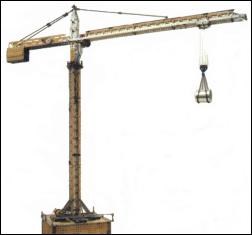 |
| |
|
|
A-Frame Beam Engine (MP 93)
The last of the series at the moment and the only one produced using DTP and digitally enhanced photographs in addition to the usual "Super IsoMec" drawing style developed by Philip. Another model for the average Meccanoman, looking to learn a few new wrinkles, this makes a satisfying project and comes over well at the exhibitions.
|
|
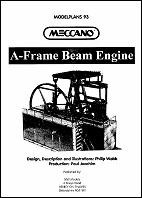 |
| |
|
|
Level-Luffing Dockside Crane and 040ST Locomotive Diorama (MP 72)
Philip decided to show Paul that he was not the only one to design models needing the best part of three number 10 sets! Seriously, though, you will need a good stock of parts — especially narrow strips — and quite a bit of experience to tackle this one. Makes a spectacular presentation of a working dockside with lots of scope for additions and good play value.
The model is based on Bristol Docks and was Highly Commended for the Henley Prize in Scale Modelling in 1990. It won the Noel Ta'Bois Trophy from the Holy Trinity Meccano Club.
|
|
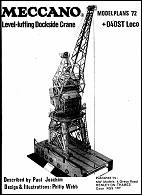 |
Paul’s Designs
These models were built to illustrate the scope for scale modelling in Meccano. They are all complex and use a large and wide range of parts. They are among the most challenging designs on offer in the ModelPlan series and are specifically aimed at the experienced Meccanoman.
Daimler Fleetline Bus. Scale 1.25 inches to the foot (MP 63)
Everything on this model works. The chassis is exactly right so any version of the Fleetline can be constructed on it — the plan offers the London Transport B20 silenced bodywork which was the last of the line.
This was the first Meccano ModelPlan to give full instructions for an automatic gearbox (this one uses torque, rather than speed, sensing so reproduces the functions of the real thing more accurately). There is also a detailed description of a system of power-assisted steering, which modellers may find useful — though the principle has been developed since this publication. And if you want to know how to make those folding doors work — here are all the answers!
Versions of this model are seen quite often, and subsequent development by the late Roger Wallis, among other modellers, has resulted in improved steering and remote control, together with the ability to remove the engine and gearbox as a single unit with a forklift truck like the prototype.
|
|
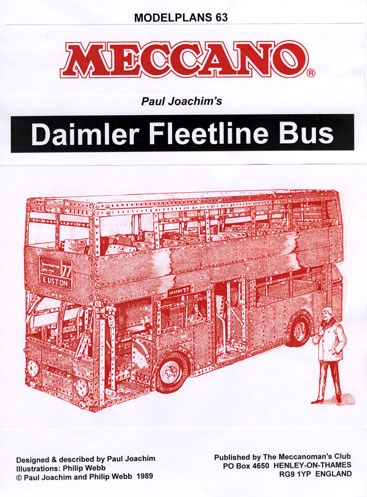 |
| |
|
|
Glasgow Coronation Mark I Tram. Scale 1 inch to the foot (MP 67)
This model demonstrates that not only the appearance of a model is critical to success, but also the way it actually works. The finished tramcar runs up and down its track making exactly the right noises and movements as the original. Paul was brought up in Glasgow and has perfectly captured the essence of this, arguably, the most beautiful and luxurious tramcar ever made.
The design uses four M0 MkI (little red) Meccano 6-volt motors to drive the axles in axle hung mode exactly as in the prototype. The bow collector is there, and it works, and all the felicitous little details that so characterise these vehicles, are there. Construction is in two halves, exactly as in the prototype. This is a great fun model and performs well, given enough track of course.
By the way, you will need a good stock of corner brackets for the windows on this model — and a number ten set contains only 2!
|
|
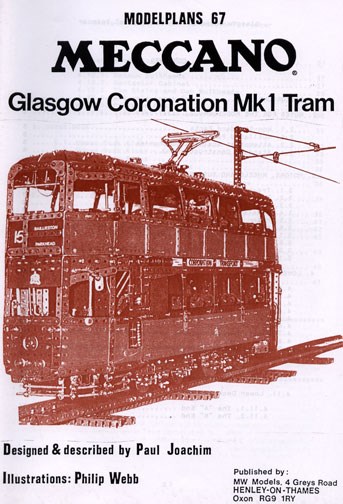 |
| |
|
|
Franco-Crosti 2-10-0 Locomotive. Scale 1 inch to the foot (MP 76)
This came second for the Issigonis Shield at Skegness in 1991 — the last year the competition was judged by expert judges rather than by "democratic" vote. It is arranged to come apart in three sections to facilitate transport, the completed model is nearly 8 feet long!
The mainframes are accurate, so any version of the BR Standard 9F can be constructed upon them, but Paul chose to reproduce the fascinating, and short-lived, Crosti double-boilered version. The weight and power of the prototype is perfectly caught in this model, which is arranged for static demonstration, though mobile mode would be easy to achieve if required as the model is quite sturdy enough to support that. Its motion and valve gear are all there and working, and even the suspension, brakes and water pick-up work. Until Roger Poulet came up with his "cutaway" Midland Compound in 1999, this was the most detailed steam locomotive in Meccano around.
You will need a good stock of circular parts — circular girders and hub disks — and a knowledge of steam locomotive design in order to get the best out of this plan. It is certainly not one for the beginner!
|
|
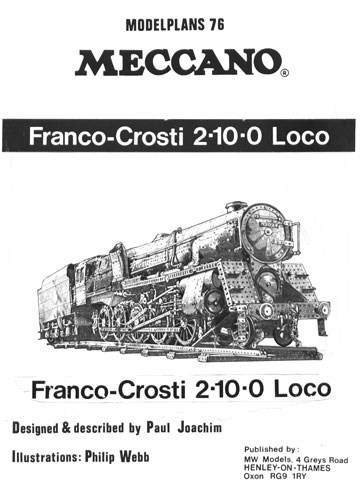 |
The “Everything” Series
The mission of this series of publications is to make some of the skills and research work of the WLMS available to a wider audience through a series of monographs. Profits from the sale of these support the development of the WLMS Magazine and its other publications.
Everything About Peter Goddard's Blocksetting Cranes
This, the latest WLMS publication, is an account of the scale Meccano models built between 1992 and 2003 by Peter Goddard, inspired by the research work of Julian Head, as related to Paul Joachim. As well as the models themselves, this work includes a vast amount of information on the prototype cranes. The printed work is in two parts. Part one contains all the narrative with drawings and images that can be reproduced by ordinary photocopying, and may be purchased on its own. Part two is produced on a laser colour copier and can be referred to simultaneously whilst reading part one. It contains many photographs, mostly in colour, to further illustrate the work. As an economical alternative, a CD version of the entire work is also available. Chapters and Appendices include:
- Introduction
- The Steam Table Top Crane
- Constructional Tips
- Fishguard/Peterhead 1914 Crane
- Sunderland & Wear 1885
- Gibraltar - Salina Cruz 1897
- Port Elizabeth 1922
- Port Leixoes (Portugal) Titan 1884
- Constantza 1896
- Peterhead 1890
- Table Bay Hercules 1930
- Mammoth for Tyne North Pier 1881
- Titan for Warrnabool Breakwater
- 50t Steam Titan (Cape Town 1925)
- Harbour Construction
- Harbour Construction Plant
- Pendulum Titan (Ransomes and Rapier)
- Mar del Plata Titan by Fives-Lille
Part One ‘Source book’, Part Two (in colour), and CD version (complete)
|
|
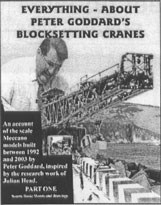 |
| |
|
|
Everything Epicyclic
Edited by Paul Joachim, this contains articles on many facets of epicyclic gearing by Michael Stevens, Michael Knowles, Nick Rudoe and Dick Hogg. Profuse illustrations and wonderful cartoons by Philip Webb, together with a useful table of prime numbers complete the package. Essential for clockmakers, Orrery builders and any one else who needs to generate very strange gear ratios.
|
|
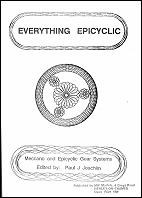 |
| |
|
|
Everything WLMS
This was produced to mark 50 editions of the club Newsletter and brings together both landmark articles from the Newsletter's past with specially commissioned work for the anniversary.
Edited by Paul Joachim, there are exclusive articles and model building plans by Bert Love, Julian Head, Philip Webb, Michael Knowles, Noel Ta'Bois, Adrian Williams, Peter Goddard and Nick Rudoe. The publication includes a complete ModelPlan, in the style and to the standard of those mentioned above, for a Harley Davidson Electra-Glide by Philip Webb. With full colour covers and many drawings, and of course a full house of Philip Webb's superb Meccano cartoons specially drawn for the occasion, this is a fitting souvenir of the Newsletter and a great introduction to the achievements of a premier Meccano Club.
|
|
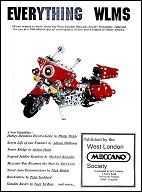 |
| |
|
|
Everything Automotive
Volume 1: Differentials and Rear Axles
Volume 2: Front Axles and Steering
Volume 3: Gearboxes and Transmissions
Collected and edited by Philip Webb, this series is already a classic reference work. Drawing on the extensive experience of WLMS members, Philip has produced a veritable encyclopaedia of information, presented in the easy reading style many readers will be familiar with from his popular Model Building Technology feature in International Meccanoman. The difference here is, he has plenty of room to go into real detail with copious drawings and descriptions. Essential for the serious or aspiring vehicle modeller.
|
|
|
| |
|
|
Everything (WLMS ever knew about) Roller Bearings
This manual on Roller Bearings draws together in its 24 pages a number of designs of varying sizes produced and developed by WLMS members over the years. Lavishly illustrated in Isomec™, it begins with the debate in GMM between two late giants - Phil Bradley and Eric Taylor — on an engineer’s approach to the design of rotating superstructures. It then moves up in scale from the smallest of Pintle Bearings, through side thrust bearings to a variety of flat bearings, arranged in size for convenient reference. These range from 3 inches to a staggering 19.5 inches across. Some of the work of Julian Head and Peter Goddard on GBSC turntables is also reported.
|
|
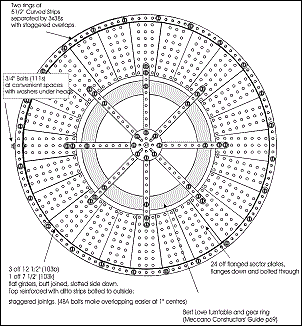 |